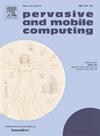Bio-inspired recruiting strategies for on-demand connectivity over a multi-layer hybrid CubeSat-UAV networks in emergency scenarios
IF 3.5
3区 计算机科学
Q2 COMPUTER SCIENCE, INFORMATION SYSTEMS
引用次数: 0
Abstract
In emergency scenarios, the network infrastructure must remain reliable and continuously available to ensure connectivity to people and optimal performance in supporting different types of applications, including real-time services. When terrestrial infrastructure is compromised during emergencies, Flying Ad Hoc Networks (FANETs) can offer a quick and effective solution for re-establishing connectivity in affected areas. The dynamic coverage provided by a swarm of UAVs (Unmanned Aerial Vehicles) during a disaster could be crucial for people inside the affected areas. In high-demand and critical situations, the performance of FANETs may deteriorate due to several factors, including simultaneous user connections, high traffic volumes, limited energy resources of network devices, and interference arising within the same geographic region. To address these challenges, this paper proposes a novel, bio-inspired recruitment algorithm that aims to guarantee good performance of FANETs in energy constrained scenarios by efficiently recruiting UAVs to cover the demand of end users connected to the network. In such a scenario, when additional UAVs cannot be reachable using the on-earth network infrastructure and multi-hop routing, the recruiting can be supported through a multi-layer hybrid architecture that integrates CubeSats to forward recruiting requests to potential UAVs located far from the network. This approach not only enhances the connectivity of end users but also ensures that the network can efficiently be adapted to the demands of users in emergency situations.
紧急情况下多层立方体卫星-无人机混合网络按需连接的仿生招聘策略
在紧急情况下,网络基础设施必须保持可靠和持续可用,以确保与人员的连接和支持不同类型应用程序(包括实时服务)的最佳性能。当地面基础设施在紧急情况下受到破坏时,飞行自组织网络(fanet)可以为受影响地区重建连接提供快速有效的解决方案。在灾难期间,一群无人机(无人驾驶飞行器)提供的动态覆盖对受灾地区的人们来说至关重要。在高需求和紧急情况下,由于用户同时连接、流量大、网络设备能源有限、同一地理区域内产生干扰等因素,fanet的性能可能会下降。为了解决这些挑战,本文提出了一种新颖的仿生招募算法,旨在通过有效招募无人机来满足连接到网络的最终用户的需求,从而保证在能量受限的情况下fanet的良好性能。在这种情况下,当使用地面网络基础设施和多跳路由无法到达额外的无人机时,可以通过集成立方体卫星的多层混合架构来支持招募,从而将招募请求转发给远离网络的潜在无人机。这种方法不仅增强了终端用户的连通性,而且保证了网络在紧急情况下能够有效地适应用户的需求。
本文章由计算机程序翻译,如有差异,请以英文原文为准。
求助全文
约1分钟内获得全文
求助全文
来源期刊

Pervasive and Mobile Computing
COMPUTER SCIENCE, INFORMATION SYSTEMS-TELECOMMUNICATIONS
CiteScore
7.70
自引率
2.30%
发文量
80
审稿时长
68 days
期刊介绍:
As envisioned by Mark Weiser as early as 1991, pervasive computing systems and services have truly become integral parts of our daily lives. Tremendous developments in a multitude of technologies ranging from personalized and embedded smart devices (e.g., smartphones, sensors, wearables, IoTs, etc.) to ubiquitous connectivity, via a variety of wireless mobile communications and cognitive networking infrastructures, to advanced computing techniques (including edge, fog and cloud) and user-friendly middleware services and platforms have significantly contributed to the unprecedented advances in pervasive and mobile computing. Cutting-edge applications and paradigms have evolved, such as cyber-physical systems and smart environments (e.g., smart city, smart energy, smart transportation, smart healthcare, etc.) that also involve human in the loop through social interactions and participatory and/or mobile crowd sensing, for example. The goal of pervasive computing systems is to improve human experience and quality of life, without explicit awareness of the underlying communications and computing technologies.
The Pervasive and Mobile Computing Journal (PMC) is a high-impact, peer-reviewed technical journal that publishes high-quality scientific articles spanning theory and practice, and covering all aspects of pervasive and mobile computing and systems.
 求助内容:
求助内容: 应助结果提醒方式:
应助结果提醒方式:


